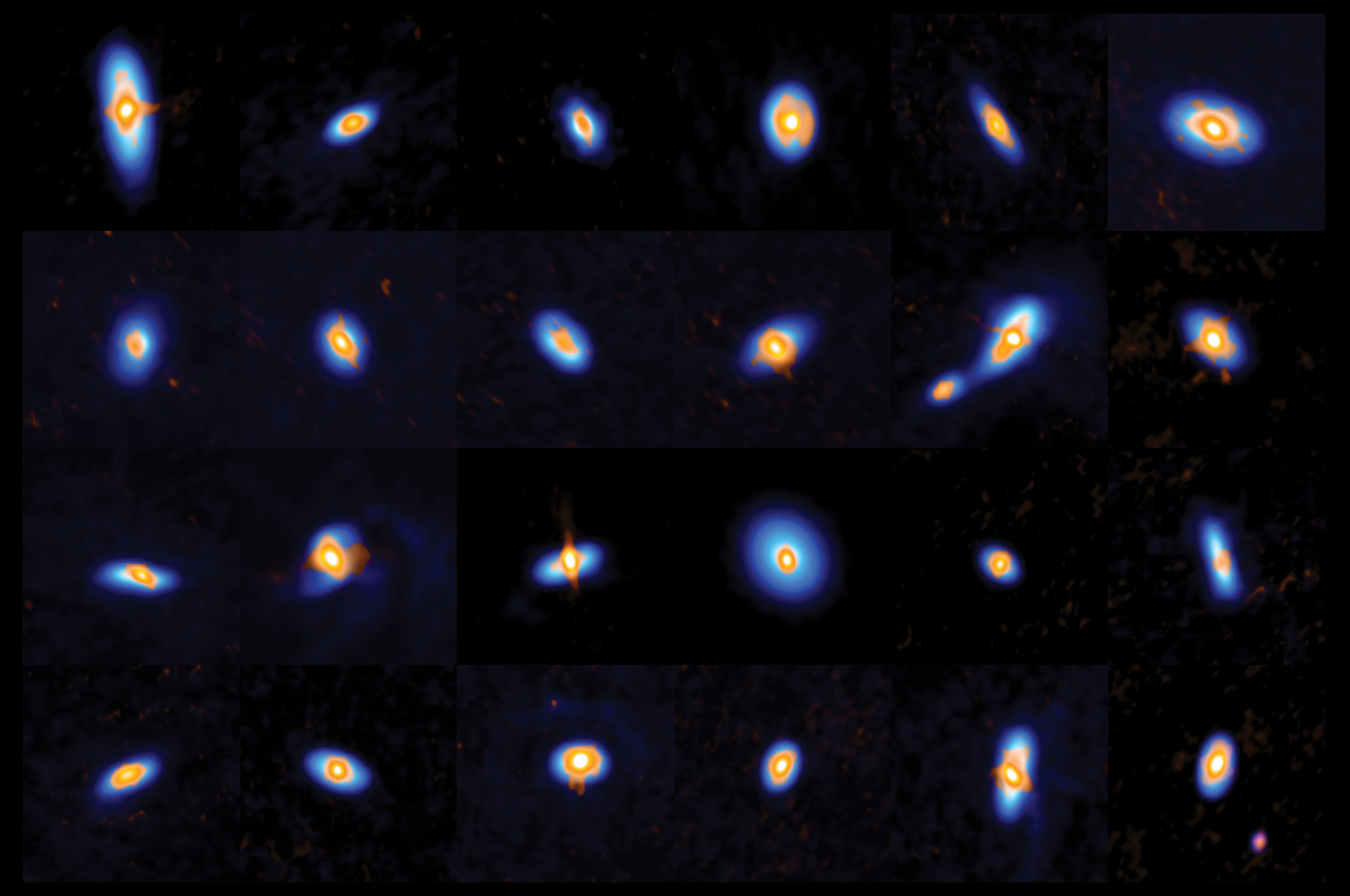
Credit: ALMA (ESO/NAOJ/NRAO), J. Tobin; NRAO/AUI/NSF, S. Dagnello
An international team of astronomers used two of the most powerful radio telescopes in the world to create more than three hundred images of planet-forming disks around very young stars in the Orion Clouds. These images reveal new details about the birthplaces of planets and the earliest stages of star formation.
Most of the stars in the universe are accompanied by planets. These planets are born in rings of dust and gas, called protoplanetary disks. Even very young stars are surrounded by these disks. Astronomers want to know exactly when these disks start to form, and what they look like. But young stars are very faint, and there are dense clouds of dust and gas surrounding them in stellar nurseries...
Read More








Recent Comments